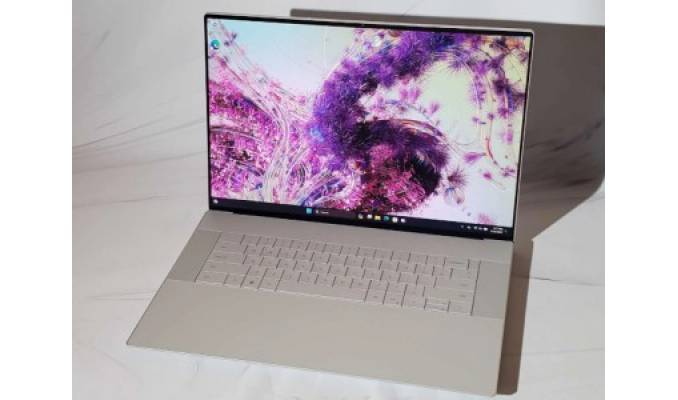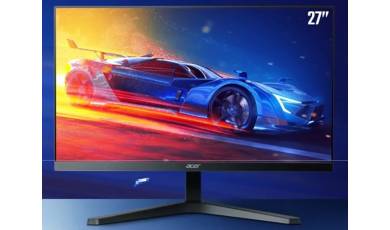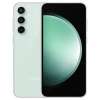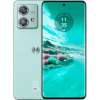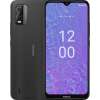Dell has launched a new series of Premium laptops. It includes two models equipped with powerful hardware and OLED-displays, as well as their IPS-modifications, which can boast an impressive autonomy - up to 27 hours.
The Dell 16 Premium features a 16.3-inch OLED OLED technology was invented by Eastman Kodak in the early 1980s. OLED panels are made from organic (carbon based) materials that emit light when electricity is applied through them. Since OLEDs do not require a backlight and filters (unlike LCD displays), they are more efficient, simpler to make, and much thinner. OLEDs have a great picture quality - brilliant colors, fast response rate and a wide viewing angle. OLEDs can also be used to make OLED lighting - thin, efficient and without any bad metals.screen (4K, 120Hz, Corning Gorilla Glass 3). The maximum backlight brightness is 400 cd/m², and the color gamut is 100% P3, there is support for HDR. The modification with IPS-screen has a lower resolution (1920x1200 pixels), and the brightness is higher - up to 500 cd/m². OLED technology was invented by Eastman Kodak in the early 1980s. OLED panels are made from organic (carbon based) materials that emit light when electricity is applied through them. Since OLEDs do not require a backlight and filters (unlike LCD displays), they are more efficient, simpler to make, and much thinner. OLEDs have a great picture quality - brilliant colors, fast response rate and a wide viewing angle. OLEDs can also be used to make OLED lighting - thin, efficient and without any bad metals.screen (4K, 120Hz, Corning Gorilla Glass 3). The maximum backlight brightness is 400 cd/m², and the color gamut is 100% P3, there is support for HDR. The modification with IPS-screen has a lower resolution (1920x1200 pixels), and the brightness is higher - up to 500 cd/m².
For the performance of the laptop, depending on the configuration, is responsible for the Intel Core Ultra 9 285H, Ultra 7 255H or Ultra 7 256H processor combined with NVIDIA GeForce RTX 5050, RTX 5060 or RTX 5070 graphics card. The manufacturer measures the battery life in the duration of watching TV series on Netflix - in the OLED OLED technology was invented by Eastman Kodak in the early 1980s. OLED panels are made from organic (carbon based) materials that emit light when electricity is applied through them. Since OLEDs do not require a backlight and filters (unlike LCD displays), they are more efficient, simpler to make, and much thinner. OLEDs have a great picture quality - brilliant colors, fast response rate and a wide viewing angle. OLEDs can also be used to make OLED lighting - thin, efficient and without any bad metals.version this indicator is up to 9 hours, in IPS OLED technology was invented by Eastman Kodak in the early 1980s. OLED panels are made from organic (carbon based) materials that emit light when electricity is applied through them. Since OLEDs do not require a backlight and filters (unlike LCD displays), they are more efficient, simpler to make, and much thinner. OLEDs have a great picture quality - brilliant colors, fast response rate and a wide viewing angle. OLEDs can also be used to make OLED lighting - thin, efficient and without any bad metals.version this indicator is up to 9 hours, in IPS In Plane Switching (IPS) panels are an expensive option but they have excellent colour accuracy and far greater viewing angles then TN and VA panels (Not that we condone slouching while gaming). They are great for graphics design and photo editing. However, the only downside to IPS panels if that they can sometimes have a slower response time than TN panels. This is the only real problem if you’re a very competitive gamer or want to game in 3D. As of late “IPS” has become a big marketing word. Step into an Apple store and you would be hard pressed talking to someone that didn’t mention Apple’s “brand new IPS Displays!” In fact, Apple is probably one of the biggest marketers of this “new-found” technology. As a business person myself, this is when you have to tip your hat to Apple’s awesome marketing machine. Why? Well, because IPS is actually nothing new. In fact, this technology was originally invented in 1996 by Hitachi..- up to 27 hours. In Plane Switching (IPS) panels are an expensive option but they have excellent colour accuracy and far greater viewing angles then TN and VA panels (Not that we condone slouching while gaming). They are great for graphics design and photo editing. However, the only downside to IPS panels if that they can sometimes have a slower response time than TN panels. This is the only real problem if you’re a very competitive gamer or want to game in 3D. As of late “IPS” has become a big marketing word. Step into an Apple store and you would be hard pressed talking to someone that didn’t mention Apple’s “brand new IPS Displays!” In fact, Apple is probably one of the biggest marketers of this “new-found” technology. As a business person myself, this is when you have to tip your hat to Apple’s awesome marketing machine. Why? Well, because IPS is actually nothing new. In fact, this technology was originally invented in 1996 by Hitachi..- up to 27 hours.
The list of characteristics is completed by stereo speakers with Dolby Atmos, up to 64 GB of dual-channel RAM Random Access Memory (RAM) is the place in a computer where the operating system, application programs, and data in current use are kept so that they can be quickly reached by the computers processor. LPDDR5X-8400, Wi-Fi Random Access Memory (RAM) is the place in a computer where the operating system, application programs, and data in current use are kept so that they can be quickly reached by the computers processor. LPDDR5X-8400, Wi-Fi Wi-Fi is a type of wireless networking protocol that allows devices to communicate without cords or cables. Wi-Fi is technically an industry term that represents a type of wireless local area network (LAN) protocol based on the 802.11 IEEE network standard. It is the most popular means of communicating data wirelessly, within a fixed location, today. 7 module, SSD-storage up to 4 TB and a webcam with 1080p resolution. Wi-Fi is a type of wireless networking protocol that allows devices to communicate without cords or cables. Wi-Fi is technically an industry term that represents a type of wireless local area network (LAN) protocol based on the 802.11 IEEE network standard. It is the most popular means of communicating data wirelessly, within a fixed location, today. 7 module, SSD-storage up to 4 TB and a webcam with 1080p resolution.
The Dell 14 Premium gets a 14.5-inch OLED OLED technology was invented by Eastman Kodak in the early 1980s. OLED panels are made from organic (carbon based) materials that emit light when electricity is applied through them. Since OLEDs do not require a backlight and filters (unlike LCD displays), they are more efficient, simpler to make, and much thinner. OLEDs have a great picture quality - brilliant colors, fast response rate and a wide viewing angle. OLEDs can also be used to make OLED lighting - thin, efficient and without any bad metals.matrix with 3.2K resolution, while the IPS OLED technology was invented by Eastman Kodak in the early 1980s. OLED panels are made from organic (carbon based) materials that emit light when electricity is applied through them. Since OLEDs do not require a backlight and filters (unlike LCD displays), they are more efficient, simpler to make, and much thinner. OLEDs have a great picture quality - brilliant colors, fast response rate and a wide viewing angle. OLEDs can also be used to make OLED lighting - thin, efficient and without any bad metals.matrix with 3.2K resolution, while the IPS In Plane Switching (IPS) panels are an expensive option but they have excellent colour accuracy and far greater viewing angles then TN and VA panels (Not that we condone slouching while gaming). They are great for graphics design and photo editing. However, the only downside to IPS panels if that they can sometimes have a slower response time than TN panels. This is the only real problem if you’re a very competitive gamer or want to game in 3D. As of late “IPS” has become a big marketing word. Step into an Apple store and you would be hard pressed talking to someone that didn’t mention Apple’s “brand new IPS Displays!” In fact, Apple is probably one of the biggest marketers of this “new-found” technology. As a business person myself, this is when you have to tip your hat to Apple’s awesome marketing machine. Why? Well, because IPS is actually nothing new. In fact, this technology was originally invented in 1996 by Hitachi..modification differs from the 16-inch one only in diagonal size. The hardware is the same as the older model, except that this version does not have a modification with Intel Core Ultra 9 285H processor. Running time - up to 11 h for OLED In Plane Switching (IPS) panels are an expensive option but they have excellent colour accuracy and far greater viewing angles then TN and VA panels (Not that we condone slouching while gaming). They are great for graphics design and photo editing. However, the only downside to IPS panels if that they can sometimes have a slower response time than TN panels. This is the only real problem if you’re a very competitive gamer or want to game in 3D. As of late “IPS” has become a big marketing word. Step into an Apple store and you would be hard pressed talking to someone that didn’t mention Apple’s “brand new IPS Displays!” In fact, Apple is probably one of the biggest marketers of this “new-found” technology. As a business person myself, this is when you have to tip your hat to Apple’s awesome marketing machine. Why? Well, because IPS is actually nothing new. In fact, this technology was originally invented in 1996 by Hitachi..modification differs from the 16-inch one only in diagonal size. The hardware is the same as the older model, except that this version does not have a modification with Intel Core Ultra 9 285H processor. Running time - up to 11 h for OLED OLED technology was invented by Eastman Kodak in the early 1980s. OLED panels are made from organic (carbon based) materials that emit light when electricity is applied through them. Since OLEDs do not require a backlight and filters (unlike LCD displays), they are more efficient, simpler to make, and much thinner. OLEDs have a great picture quality - brilliant colors, fast response rate and a wide viewing angle. OLEDs can also be used to make OLED lighting - thin, efficient and without any bad metals.and up to 27 hours for IPS, and of the graphics cards available only RTX 4050. OLED technology was invented by Eastman Kodak in the early 1980s. OLED panels are made from organic (carbon based) materials that emit light when electricity is applied through them. Since OLEDs do not require a backlight and filters (unlike LCD displays), they are more efficient, simpler to make, and much thinner. OLEDs have a great picture quality - brilliant colors, fast response rate and a wide viewing angle. OLEDs can also be used to make OLED lighting - thin, efficient and without any bad metals.and up to 27 hours for IPS, and of the graphics cards available only RTX 4050.
|
